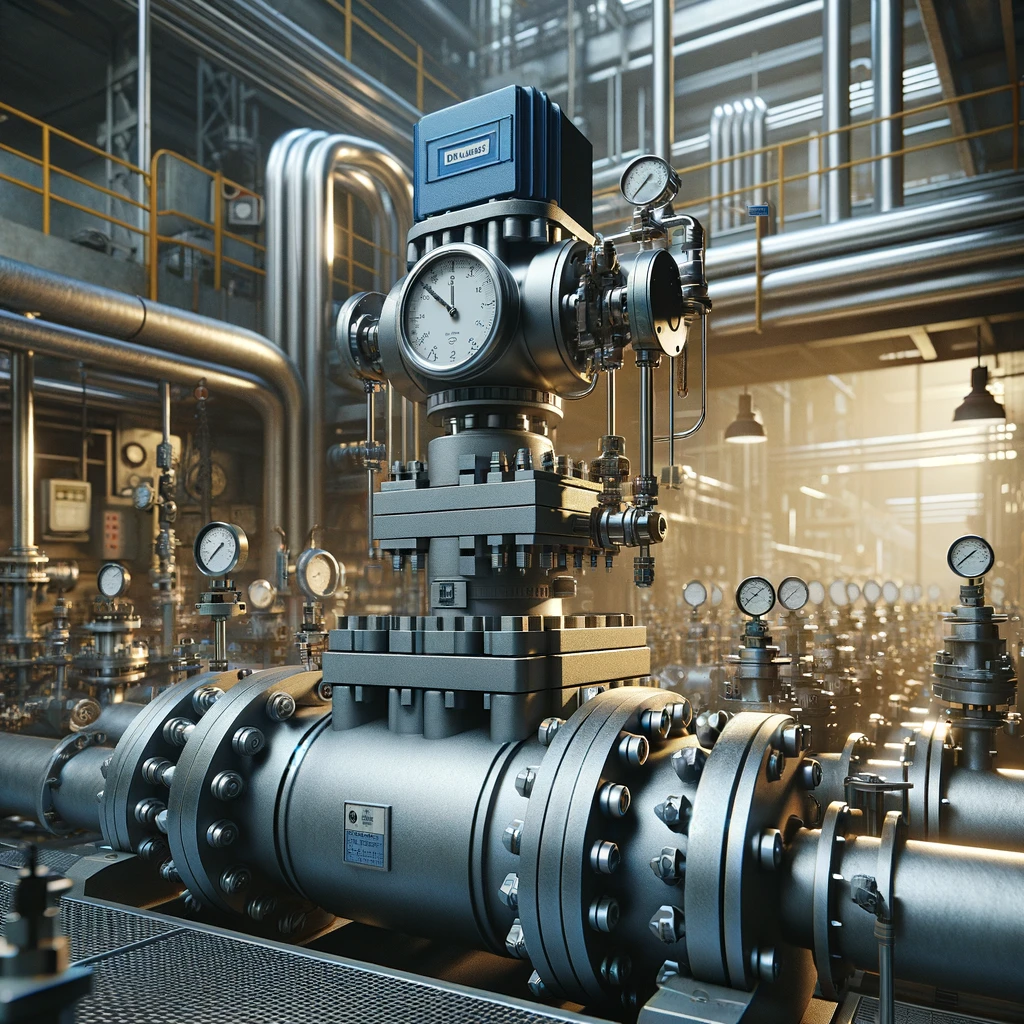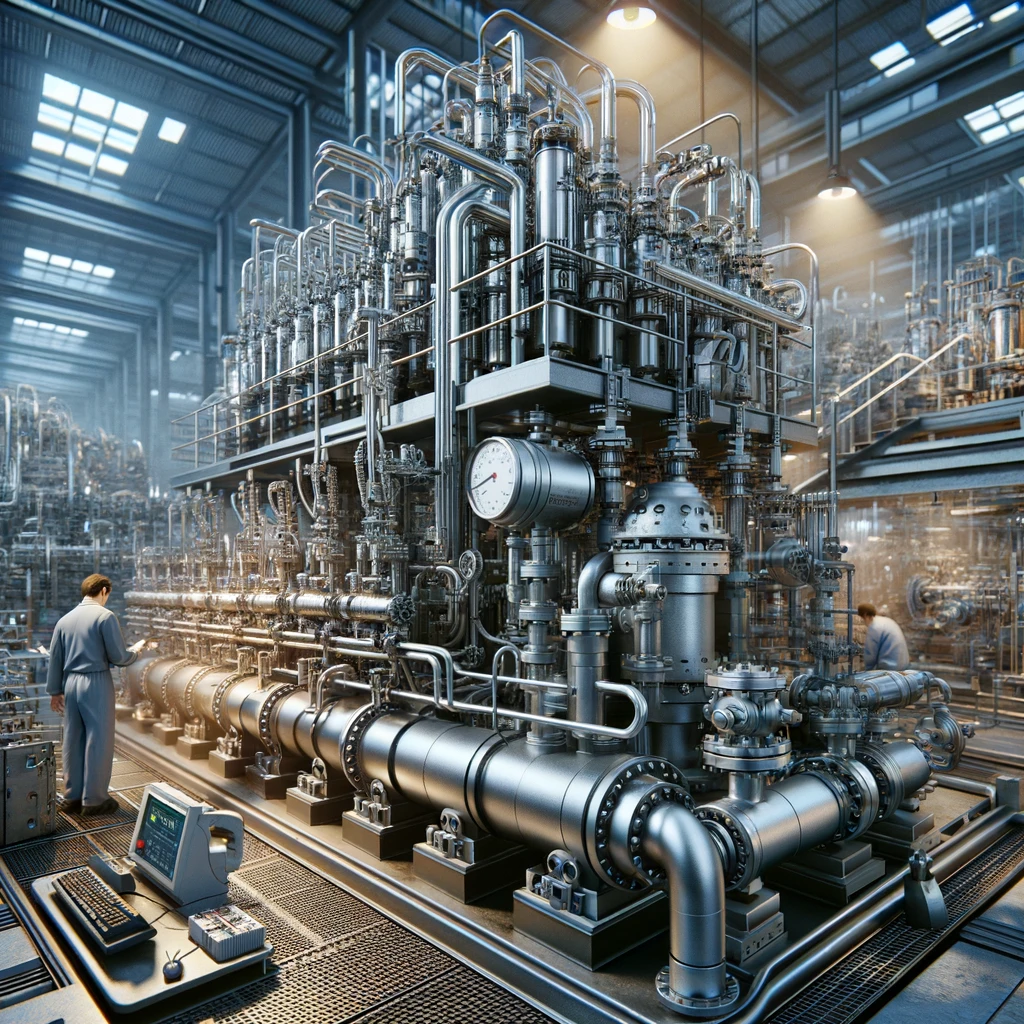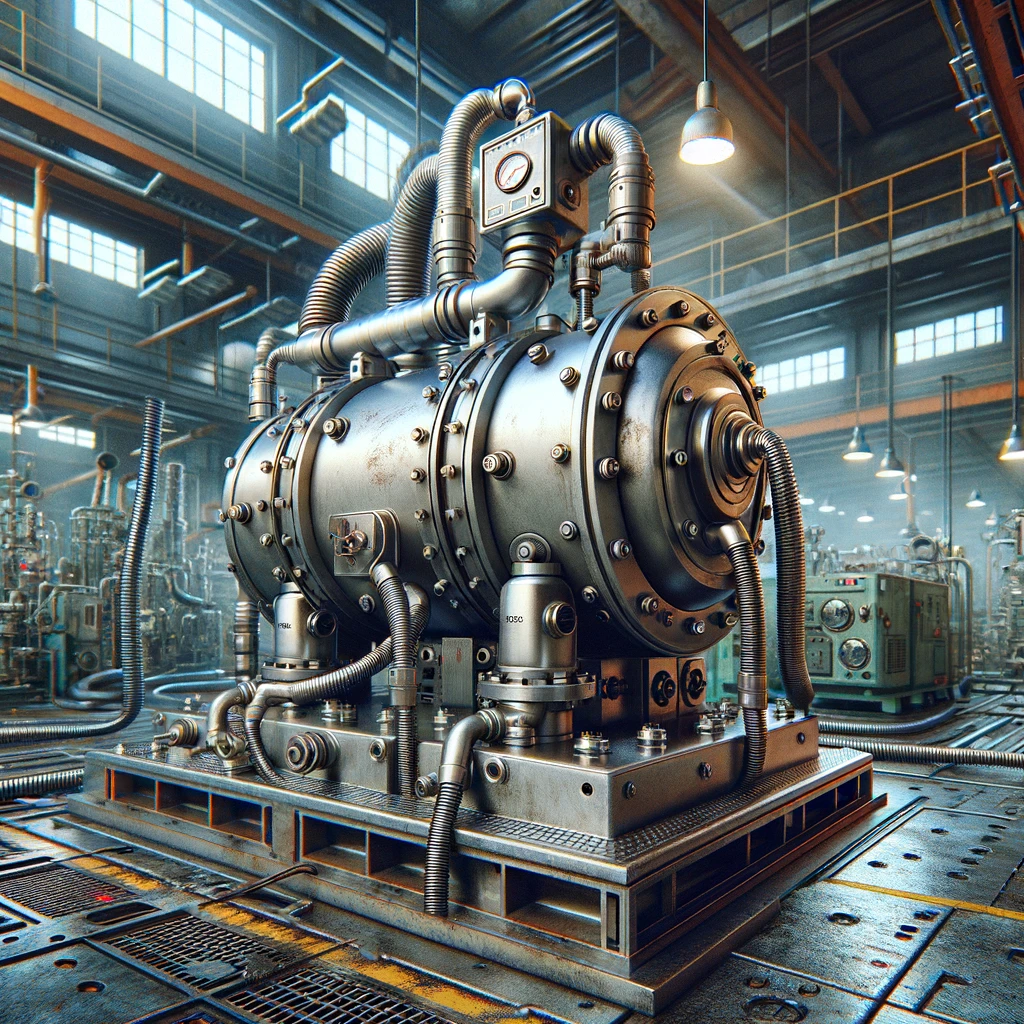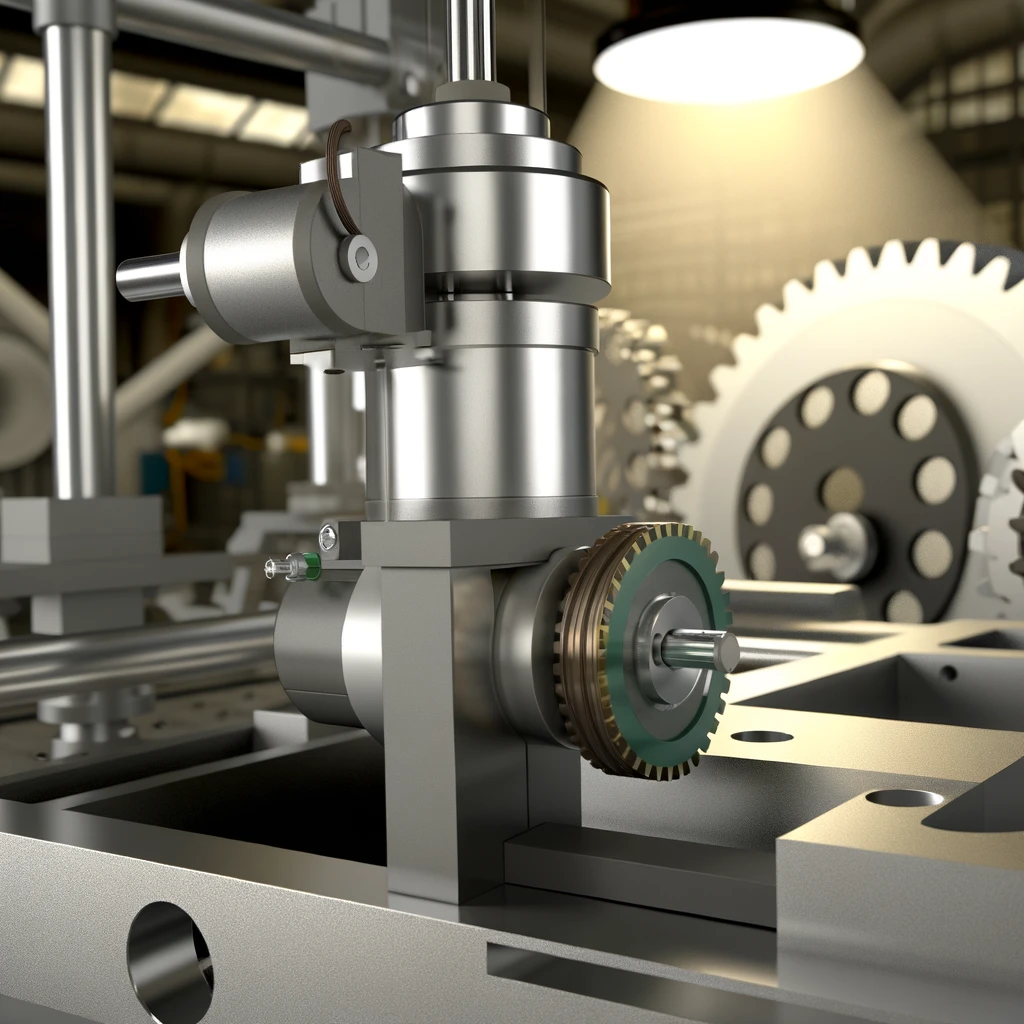A rotary actuator is a mechanical device used to convert energy into rotating motion. It is widely utilized in various industrial applications where precise control of angular rotation is required.
Rotary actuators play a crucial role in automation and control systems, enabling efficient movement and positioning of machine components. This introduction will provide an insight into their operational principles, types, and applications, guiding readers through the significance of these devices in modern engineering.
What Is A Rotary Actuator
A rotary actuator is a device designed to generate rotational motion. It converts energy into mechanical motion. The energy can be electrical, hydraulic, or pneumatic, depending on the type of actuator. Its primary purpose is to control movement with precision.
How Does Rotary Actuator Work
A rotary actuator converts energy into rotational motion. This process involves various components working together seamlessly. The type of energy input may vary. In electric actuators, this is electrical power; hydraulic uses fluid pressure; and pneumatic relies on compressed air.
The transformation begins when the actuator receives its energy source. For electric types, an electrical signal activates the motor within. This motor then generates torque. In hydraulic and pneumatic actuators, fluid or air pressure pushes against a piston or similar mechanism to create rotation.
Components Of Rotary Actuators
Housing
The housing of rotary actuators protects the internal components from environmental challenges such as temperature fluctuations and moisture. It is designed to ensure the durability and reliability of the actuator under various operating conditions.
Bearings
Bearings in rotary actuators support the shafts, allowing for smooth rotation. They play a critical role in reducing friction between the moving parts, which contributes to a longer lifespan of the actuator by minimizing wear.
Shafts
Shafts are essential components that transmit rotational force from the motor to the output. They are precision-engineered to ensure proper alignment and strength, ensuring the actuator can deliver the desired motion efficiently and effectively.
Seals
Seals are employed to keep contaminants out of the actuator and retain lubrication within it. They are crucial for preventing leakage, which helps in maintaining optimal performance and longevity of the actuator over time.
Motors (in Electric Rotary Actuators)
In electric rotary actuators, motors are used to convert electrical energy into mechanical motion. The selection of the motor significantly influences the actuator’s speed, torque, and control capabilities, making it a vital component for achieving the desired performance.
Sensors and Feedback Devices
Sensors and feedback devices are integrated into rotary actuators to monitor their performance accurately. These components enable precise control over the actuator’s position, speed, and force, which is essential for applications that demand high accuracy and reliability.

Types Of Rotary Actuators
Rotary actuators come in various types. Each serves specific applications depending on required force, speed, and environmental conditions.
Electric Rotary Actuators operate using electric motors. They convert electrical energy into mechanical torque. This type is favored for precise control and positioning tasks. They are commonly found in automation and robotics.
Hydraulic Rotary Actuators utilize fluid power to create motion. High force output characterizes them, making them suitable for heavy-duty industrial applications. They work well where strong, smooth movements are needed.
Pneumatic Rotary Actuators use compressed air to generate motion. Known for rapid movement and high-speed operations, they are often used in packaging and assembly lines.
Other Types:
- Mechanical Rotary Actuators: These operate through mechanical components like gears or cams. They are simple, durable, and often used where electricity is unavailable.
- Piezoelectric Actuators: These convert electrical signals into mechanical displacement through piezoelectric materials. Used for ultra-precise movements in fields like optics and nanotechnology.
Electric Rotary Actuators
Electric rotary actuators convert electrical energy into rotational motion. They are popular in applications requiring precise position, speed, and torque control. Unlike hydraulic or pneumatic types, electric actuators offer cleaner operations without the need for fluid lines.
These actuators consist of an electric motor, gears (if necessary for modifying torque and speed), and a feedback mechanism to ensure accurate positioning. Their operation is straightforward: an electric current activates the motor, which then turns the shaft. This rotation can be finely controlled through various input signals.
Hydraulic Rotary Actuators
Hydraulic rotary actuators convert hydraulic energy into mechanical energy. They operate under high-pressure fluid mechanics principles. These actuators are known for their high torque at low speeds. They are sturdy and suitable for heavy-duty applications.
These actuators consist of a cylinder or fluid motor that generates rotational motion. This motion is a result of hydraulic pressure acting on the piston or vanes inside the actuator mechanism.
Hydraulic rotary actuators offer precise control over position, velocity, and acceleration. They are designed to handle significant loads and torques with ease. Their robust construction allows operation in harsh environments.
Pneumatic Rotary Actuators
Pneumatic rotary actuators use compressed air to generate motion. They transform the energy from the air into rotational force. This type of actuator is known for its high speed and precision. Pneumatic actuators are reliable and offer simplicity in design.
These actuators operate on a simple principle: pressurized air pushes against the pistons or vanes, creating rotation. The amount of rotation depends on the actuator design. Some provide limited angles of rotation, like 90 degrees, while others can achieve full 360-degree rotation.

Other Types: Mechanical and Piezoelectric Rotary Actuators
Mechanical and piezoelectric actuators represent specialized categories within the broad spectrum of rotary actuators. Each type has unique features, applications, and operating principles that distinguish them from more common electric, pneumatic, and hydraulic actuators.
Mechanical Rotary Actuators: These devices convert energy into rotational motion through mechanical means. They often employ gears, cams, or rack-and-pinion systems. Their simplicity is a key advantage. Mechanical actuators do not require fluid or electricity to operate, making them suitable for environments where safety is a concern. However, their performance can be limited by physical wear and the efficiency of the mechanical conversion process.
Piezoelectric Rotary Actuators: These sophisticated devices leverage the piezoelectric effect to create rotation. Applying an electric field causes piezoelectric materials to change shape slightly. By clever arrangement of these materials, this shape change can produce rotational motion. Although they typically offer less torque than other types of actuators, piezoelectric models excel in precision and responsiveness. Their ability to perform at micro or nano-scale makes them invaluable in fields such as optics and medical instrumentation.
Applications Of Rotary Actuators
Industrial Applications
Rotary actuators are fundamental in driving conveyor belts within industrial settings. They enable the precise control of material movement along production lines, playing a crucial role in enhancing the efficiency of processing and manufacturing operations.
Automotive Systems
In the automotive sector, rotary actuators are employed for throttle control and valve operation. Their accurate and smooth functionality is essential for improving the performance and reliability of vehicles.
Aerospace
The aerospace industry utilizes rotary actuators in satellite positioning systems and aircraft control mechanisms. These actuators allow for precise adjustments to flight paths and satellite orientations, ensuring optimal operation and safety.
Automation Technology
In the realm of automation, rotary actuators are integral to the operation of robotic arms. They empower these arms to execute complex tasks such as assembling intricate components or packaging goods with exceptional precision.
How Do I Select A Rotary Actuator?
Selecting a rotary actuator involves understanding specific requirements. Key selection criteria include torque, speed, precision, duty cycle, environmental considerations, and control feedback needs.
Torque Requirements
Torque dictates the rotational force the actuator can apply. Determine your application’s minimum and maximum torque needs to ensure the actuator meets them. Applications with high torque demands might need specially designed actuators.
Speed and Precision
Consider both the rotation speed and movement precision required. High-speed applications demand actuators capable of rapid movements without sacrificing accuracy. For tasks needing precise control or positioning, look for actuators with fine-tuning capabilities.
Duty Cycle
The duty cycle reflects how long an actuator operates versus rests within a given period. Continuous operation applications require actuators designed for 100% duty cycles, while intermittent use may allow for lower specifications.
Environmental Considerations
Assess the operating environment’s impact on the actuator. Conditions such as extreme temperatures, corrosive substances, or water exposure necessitate actuators built with materials or seals suitable for these environments.
Control and Feedback Requirements
For applications needing precise control or integration into complex systems, consider actuators with advanced control interfaces or feedback mechanisms. These features enable more accurate positioning and monitoring of actuator performance.
Selection involves matching an actuator’s specifications to your application’s exact needs—considering each factor ensures optimal operation and longevity of the device in its intended role.

What Is The Difference Between A Rotary Actuator And A Motor?
Functionality
- Rotary Actuator: Rotary actuators work on converting energy into rotational motion. Various power sources such as hydraulic fluid pressure, pneumatic air pressure, or electricity can drive them. The key role of a rotary actuator lies in controlling the angle and speed of rotation very precisely.
- Motor: Like a rotary actuator, motors also convert energy into rotational motion. However, their functionality is focused on continuous rotation rather than precise positioning. They are designed to operate as long as power is supplied, without having inherent control over position or speed.
Applications
- Rotary Actuator: These are employed when there is a requirement for controlled, angular movement within a specific range. They are excellent for tasks that call for precision positioning.
- Motor: Motors are selected for applications that demand continuous rotational motion over an indefinite number of cycles. Speed and torque output serve as vital considerations when selecting motors for different uses.
Components
- Rotary Actuator: They often include built-in features such as feedback sensors that aid in achieving positional accuracy.
- Motor: Motors might not inherently possess similar features without the addition of external devices.
What Is A Rotary Actuator More Commonly Known As?
A rotary actuator is more commonly known as a rotary motor or simply an actuator. In various industries, these devices might also be referred to with specific names based on their application or the technology they incorporate, such as servo actuators in automation fields or valve actuators in fluid control systems. Despite these varied terminologies, the fundamental purpose and functionality remain consistent across different contexts.
What Is A Rotary Actuator Used For
Rotary actuators transform energy into rotary motion. They are essential in machinery that requires precise control over movement.
Do I Need Anything Else To Make Rotary Actuators Work?
To make rotary actuators work, several accessories and supplementary equipment might be necessary. The precise requirements depend on the actuator type and application.
Power Source: All rotary actuators need a power source. Electric models require electrical power, hydraulic actuators need hydraulic fluid under pressure, and pneumatic actuators operate with compressed air.
Control System: A system to control the actuator’s movement is essential. This can include simple switches for basic on/off control or more sophisticated programmable logic controllers (PLCs) for complex motion patterns.
Mounting Hardware: Proper installation often necessitates specific mounting brackets or flanges designed to secure the actuator firmly in place and align it correctly with the machinery it operates.
Connectors and Cabling: Electric and electronic types need connectors and cables for power supply and communication with control systems. Hydraulic and pneumatic models require hoses or pipes to connect them with their respective power sources.
Feedback Devices: For applications needing precise positioning, feedback devices such as encoders or potentiometers are vital. They provide real-time data on the actuator’s position to the control system.
Accessories for Environmental Protection: In harsh conditions, additional protection may be needed. This can involve seals against dust and moisture or heaters to prevent freezing in cold environments.
In summary, while rotary actuators are capable components on their own, their effective operation often hinges on incorporating suitable ancillary systems and protective measures tailored to the specific application requirements.
In Conclusion
In summary, a rotary actuator is an essential mechanical device designed to convert energy into rotational motion for various industrial applications.
Discover the power and versatility of rotary actuators for your projects. Contact us today to learn more about how our cutting-edge solutions can enhance your operations.
